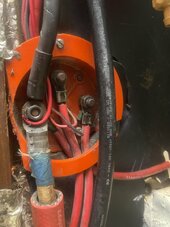SnowSurfer
New Member
Aloha
My 1st post on the forum.
Just bought an older sailboat, previous owner kept everything old school.
System does not hold charge and needs to be replaced.
I’ve built a successful 300w system on my truck and it’s never failed in 5yrs.
I was confident I could build a correct array to get my boat up to date and have electrical efficiency.
I’m for a loss … really need some guidance.
The current system has Two battery switches.
1-2 Both-Off
Lots of random wires all tied in to both of them.
I’m very confused as how to either incorporate them into the new system or completely get rid of them as I’m not sure if they’re even needed.
There’s currently 1 100w Renogy monocrystalline panel run into a Renogy PMW30CC charger. Both from 2012.
They are somehow wired into 4 Duracell 12v acids, each bank has 2 different sized batteries??
And the next puzzle for me is the system is tied into the alternator which I believe was his go to choice of charging.
I’m confused
Please any help would be greatly appreciated
My 1st post on the forum.
Just bought an older sailboat, previous owner kept everything old school.
System does not hold charge and needs to be replaced.
I’ve built a successful 300w system on my truck and it’s never failed in 5yrs.
I was confident I could build a correct array to get my boat up to date and have electrical efficiency.
I’m for a loss … really need some guidance.
The current system has Two battery switches.
1-2 Both-Off
Lots of random wires all tied in to both of them.
I’m very confused as how to either incorporate them into the new system or completely get rid of them as I’m not sure if they’re even needed.
There’s currently 1 100w Renogy monocrystalline panel run into a Renogy PMW30CC charger. Both from 2012.
They are somehow wired into 4 Duracell 12v acids, each bank has 2 different sized batteries??
And the next puzzle for me is the system is tied into the alternator which I believe was his go to choice of charging.
I’m confused
Please any help would be greatly appreciated



